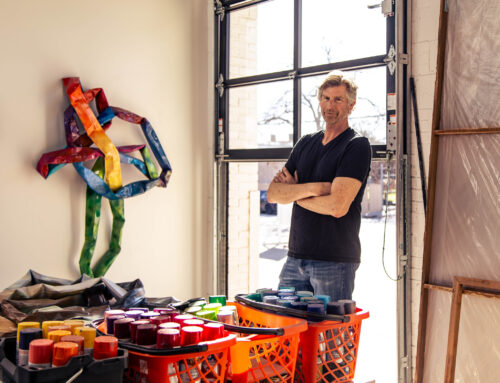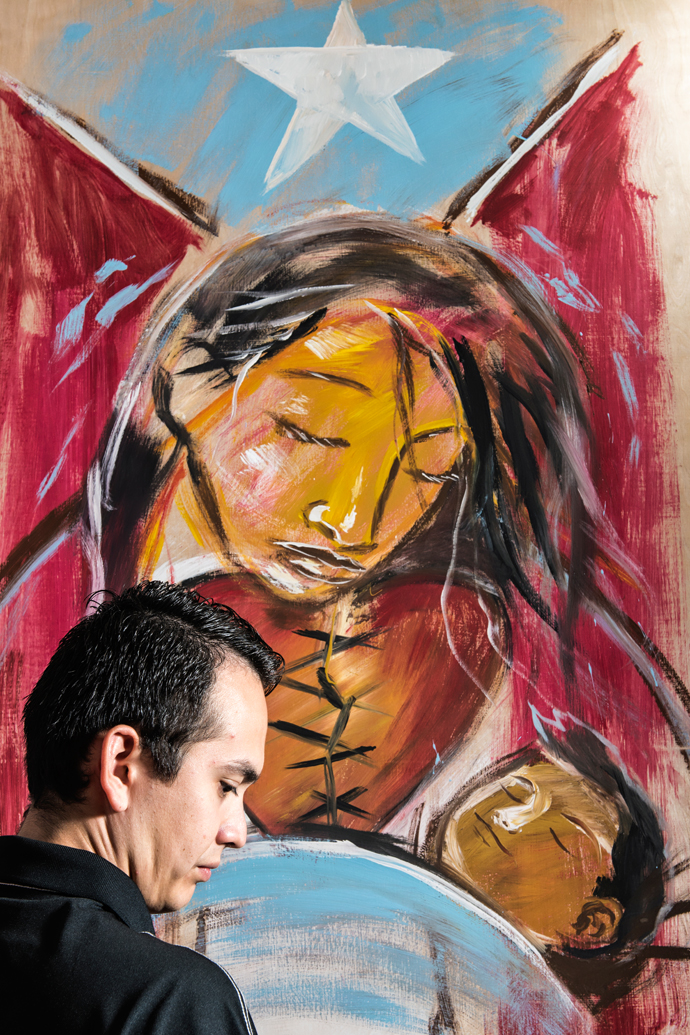
Jose Santoyo photo by Danny Fulgencio
Growing up, children across the globe see glimpses of American culture in Hollywood movies and envision a world with endless possibilities. For some, it’s hard not to fantasize about a future that is free from violence or war. For others, it’s the hope that their educational opportunities will not be limited simply because of who they are.
But many immigrants ponder whether it’s possible for the American dream to become a reality. Entering the country is increasingly difficult in a post 9/11 world where immigration is synonymous with a never-ending political battle. And making it to the United States safely is just one of many hurdles that immigrants face, as who they were often clashes with who they’ve become.
In Preston Hollow, immigrants at Southern Methodist University search for a sense of belonging at an institution where international students only make up 14 percent of its population.
“You come to America because you think it’s going to be familiar, but the cultural gap is much bigger than you thought,” says Maxime Foerster, who grew up in Toulouse, France and now teaches at SMU. “What I love about Dallas, personally, is it’s a city that doesn’t have a soul yet, because it’s a young city. As a migrant, you feel like you are bringing a little contribution to the making of the identity.”
While most student immigrants at SMU can’t vote, they hope their voices are heard since politics directly impact their future. The local students and faculty featured here seek understanding, a chance to share their stories with the hope of finding common ground.
Coming to America
At age 8, SMU student Jose Santoyo lived on a ranch in Aparandan, a rural area in Michoacan, Mexico caught in the crossfire between drug cartels fighting to control the area. Within three months, both his father and grandfather were killed, their bodies left for his mother to find.
“Nobody wanted to get close to the body, because they were afraid something would happen to them, too,” he says. “Even the cops won’t get involved out of fear something will happen to them.”
Santoyo’s family then relocated to the nearby town of Tacambero. But his mother, with only a second-grade education and four young children, could not support the family alone.
She considered applying for travel visas to come to the US, but it would take at least six months. As their savings dwindled, staying in Mexico was no longer an option.
Santoyo’s mother called her brother in the US from a payphone. She told him she couldn’t wait any longer. They needed to leave.
Suitcases in hand, Santoyo’s family crossed the border in Nogales, Ariz. one mid-morning in April 2001, just months before 9/11 would drastically alter national security.
“For me, it was actually pretty easy to enter the country, partially because of the way we looked,” he says. “We’re light-skinned Mexicans, so there’s not that discrimination against us.”
Across the globe in Tehran, Iran, then 14-year-old Shirin Tavakoli was writing for a teen magazine. The SMU alumna aspired to be a human rights advocate and work for the government, but she knew that would be impossible in Iran, where women rarely rise to positions of power.
“In the Irani government, I could never reach my full potential without putting myself and my family at risk of being arrested,” she says.
Her father already had a green card, so he applied for American visas and green cards for both Tavakoli and her brother in 2003. Because the US had no diplomatic relations with Iran, the family travelled to an embassy in Abu Dhabi in 2008. It was a full five years before she stepped on an airplane headed to Houston, where her half-siblings lived.
“I was very privileged to be able to immigrate legally from Iran,” she says. “It was a really rough process.”
Over in Western Europe, Herve Tchumkam knew his educational and career opportunities were limited, especially as a French man of African descent, so he needed to look for other options.
Tchumkam arrived in the United States in 2005 as a graduate student and teaching assistant at the University of Pennsylvania. Five years later, he was hired to teach French studies at SMU.
But the daily discrimination he faced as an African descendant living north of Paris is something he can’t shake.
“You go to the same school, go to the same places, but you’ll never be like them,” he says.
Standing out has become part of the norm for Pakistani native Syed Rizvi. The SMU student was a toddler when he and his parents immigrated from Lahore to New York. When his family later moved to Leander, Texas, to be closer to family, he also left the diversity of New York City behind.
“I was the only person that looked like me,” he says. “I was the only Muslim person in that area, so that was interesting.”
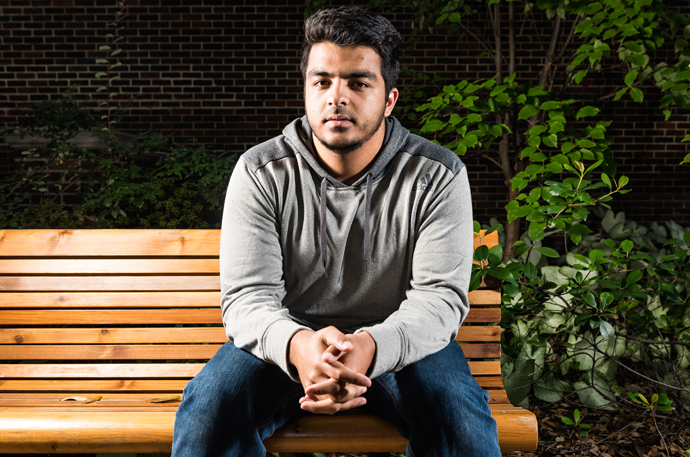
Sayed Rizvi Photo by Danny Fulgencio
Between two worlds
Until Rizvi started high school, he spent summer or winter breaks in Pakistan to visit his extended family members. Navigating two cultures became second nature, and he left his western clothes in Texas in favor of traditional Pakistani garb and traded English for Urdu.
“I always had that diverse perspective, the international perspective, just from going to Pakistan and visiting families in other parts,” he says. “I tried to propagate that and teach people in school that your world isn’t so limited.”
In Tehran, Tavakoli was overly confident in the idea that she would adjust to life in the United States quickly, especially because she spoke fluent English.
Instead, living in Texas without her immediate family left Tavakoli lost. Jokes her new friends made did not seem funny, many of the pop culture references were unfamiliar and real Persian food was difficult to find when she craved a taste of home.
“I didn’t know how to act. I was sometimes ashamed not knowing a meaning of a word,” she says. “It was a total reinvention of my identity. I wasn’t comfortable.”
She was grateful she had better opportunities, but she still became depressed.
“Yes, I’m happy to be here,” she says. “I’m glad I was able to work hard and follow my path and my dreams. However, this whole notion because you came from a worse place you should be happy here is completely, completely wrong.”
At first, Santoyo struggled in the United States and complained about the unfamiliarity of a new home in Corsicana, Texas. But as he became older, his complaints were replaced with larger concerns about what it means to be undocumented in the United States.
Santoyo is now one of roughly 140,000 people in Texas and roughly 845,000 people in the United States exempt from deportation under the federal Deferred Action for Childhood Arrivals (DACA) program. The immigration policy, which took effect in August 2012, allows certain undocumented immigrants who arrived as children to receive a renewable two-year work permit to stay legally in the country.
Santoyo has been a vocal activist for immigrant issues, which led him to study human rights at SMU.
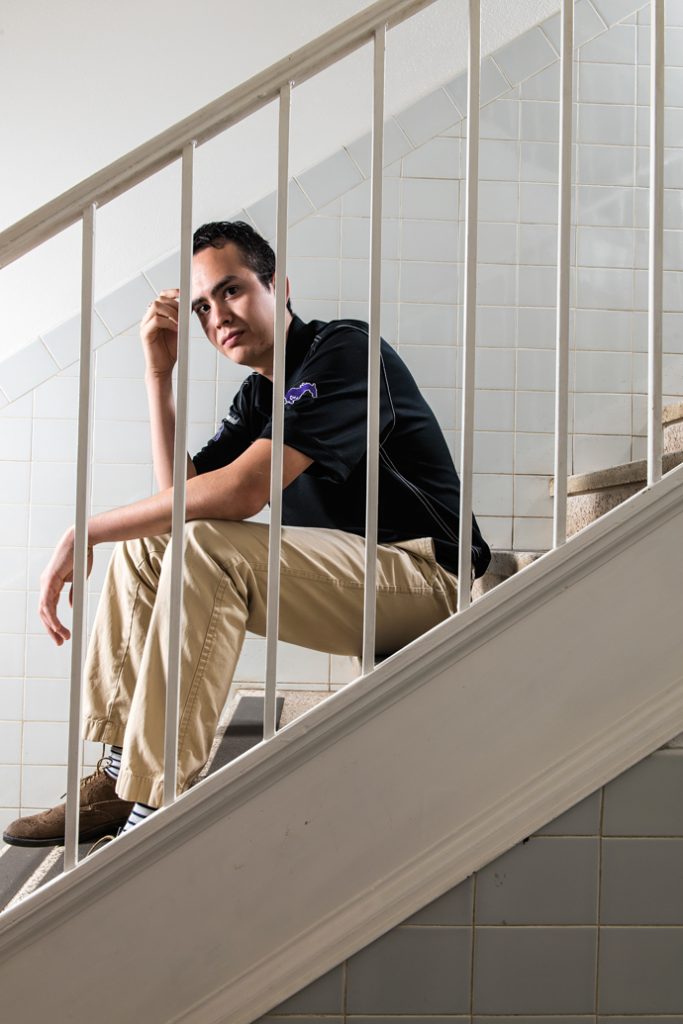
Jose Santoyo photo by Danny Fulgencio
“The first two or three weeks that I was at SMU, I felt like an outcast,” he says. “I would walk to class and walk out and never see people that looked like me. I couldn’t really relate.”
According to Forbes, 65.8 percent of students at SMU were white while just 11.7 percent of students were Hispanic/Latino in 2014. It’s drastically less diverse than the state, where 45.3 percent of Texans are white, compared to 37.6 percent Hispanic/Latino and growing, as shown in the 2010 state censuses.
While the university has made strides to promote diversity, there are improvements that still can be made, says Brad Klein, associate director of the Embrey Human Rights Program. This year, 26 percent of students are minorities, up from 24 percent in 2012. The number of international students has more than doubled in that same timeframe, from 6.7 percent to 14.6 percent.
Like Santoyo, Tavakoli enrolled in SMU’s human rights program in 2010. She was comfortable at the university, despite standing out as one of only a few minorities.
“I’m going to be honest about SMU. It was a great experience only because of the program,” she says. “SMU is really not that diverse.”
Klein says international and minority students are attracted to the human rights program because it emphasizes the social issues that directly impact their countries and families. The human rights program is one of only seven in the nation, and that’s something Klein hopes will draw people of all backgrounds to SMU, and Dallas, too.
“People don’t think about human rights when they think of Dallas, but they could,” he says.
It’s rare that Tchumkam does not discuss human rights and discrimination with his post-colonial studies students. He tells them minorities in France undergo inequality similar to those in the United States, but in France, it does not make headlines.
“I don’t expect hearing cheers from my students, because they have a hard time hearing it,” he says.
When Tchumkam left the University of Pennsylvania in 2010 to teach at SMU, it became clear he was an outsider — a minority and foreigner — compared to most faculty and students.
“It was shocking at first,” he says. “From Philadelphia to Dallas, it can be very painful. But I think it’s also been very rewarding at the personal and professional level.”
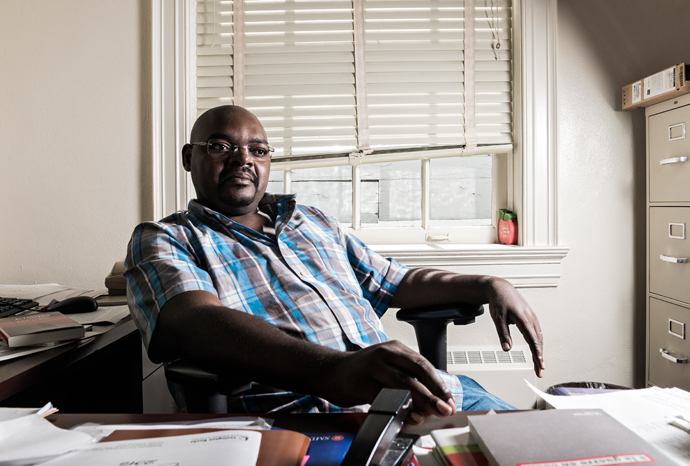
Hervet Chumkam photo by Danny Fulgencio
The future is bright and murky
Because Rizvi always has traversed between Pakistan and the United States, between the East Coast and the South, he has learned to not only adapt but also encourage others to explore outside of their everyday norms.
“I think their limited world view helped me expand mine,” he says.
Santoyo also hopes through sharing his story people understand immigration isn’t that simple.
“I think it’s very complex, and in order to understand it, you have to find out what is impacting people in these countries that makes them want to migrate or makes them want to move,” he says. “A lot of times, when you have these refugee crises, it’s because the crime and violence and poverty and other issues, of course.”
But speaking publicly about his status puts him under the microscope for others, and there is little room for error.
“Being a first-generation college student and being undocumented, you feel like there’s no other option but to succeed, but to graduate college, and have a good job and have stability,” he says.
Santoyo will graduate from the university’s Embrey Human Rights Program in just a month. He is unsure where he will find a job, a challenge most soon-to-be graduates face. But unlike many of his peers, the upcoming presidential election only magnifies the uncertainty Santoyo faces.
When Santoyo hears Republican presidential nominee Donald Trump say he’d repeal DACA if he was elected, it’s hard for Santoyo to imagine life without his social security number, work permit or even his driver’s license.
“That’s kind of scary for me if I were to lose my DACA, because I feel like right now it’s like a bubble that’s protecting me,” he says.
And although he cannot vote, he has found other ways to become involved, including campaigning for local candidates and participating in protests from Dallas to Washington D.C.
Tavakoli has become involved in the American political system as well, and hopes she can find a career in that field. The current University of Los Angeles law student became a permanent resident recently and will have the opportunity to cast her first ballot this month.
“It feels great because now I can work for the government. I can vote,” she says. “In classes, I don’t have to say ‘United States citizen,’ I can say ‘we.’ ”
But assimilating to American culture ultimately meant leaving pieces of her Iranian identity behind.
She returned to Tehran for the first time in six years this August, where she was ecstatic to drink coffee with long lost friends, but was anxious that her homeland might seem foreign. She realized Iran hadn’t changed, but she certainly had.
Exaggerated colloquialisms in Farsi, like saying “I’d die for you,” seemed less than genuine. But in turn, Iranians’ glamorized view of the United States was anything but Tavakoli’s reality.
“If you live in the United States and want to become successful… you have to understand the culture and sort of integrate,” she says. “Little social interactions I loved or conversations I used to die for I couldn’t accept.”
And now, as she still tries to define what home means to her, she is learning how to embrace who she’s become, even if it is stuck between two worlds.
“I’m proud to say I’m Iranian,” she says. “It has faded and, in some ways, lessened, but still, there are parts of me that don’t belong to this country, to this culture.”






